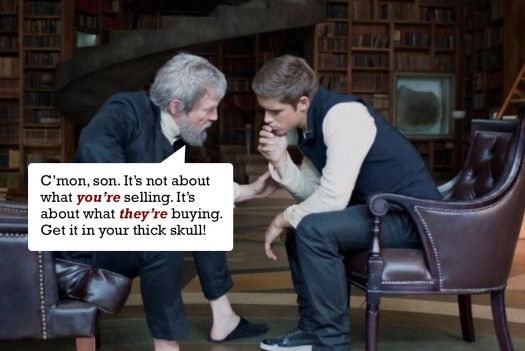A Placemaking Journal
The Wørd: Placemaking Edition
 For some reason — perhaps because the weather was poor, I have a 15 year old daughter, and watching movies makes for a good way to cope with both — one of the themes of the Doyon Family holiday break ended up being future dystopias. Not something necessarily aligned with the hopeful messages more commonly associated with the season but instructive nonetheless.
For some reason — perhaps because the weather was poor, I have a 15 year old daughter, and watching movies makes for a good way to cope with both — one of the themes of the Doyon Family holiday break ended up being future dystopias. Not something necessarily aligned with the hopeful messages more commonly associated with the season but instructive nonetheless.
One of those movies was “The Giver,” which chronicles life in a post-apocalyptic community where, in an effort to prevent conflict, they’ve structured daily life to remove emotion. One of the rules that help govern this culture is “precision of language” — words are strictly regulated to ensure they don’t connect tangible specifics with broader emotional ideas. For example, co-habitants rather than family. Or dwelling rather than home.
What becomes apparent over the course of the film is that the precision demanded of the community’s inhabitants delivers anything but, because it fails to connect with the fundamentals of what it truly means to be human.
And that got me thinking: We in the placemaking game do this too. A lot.
New Year, New Words
We love to regulate language, don’t we?
It starts in the media, with the yearly debating of words in the abstract. We don’t discuss who we’re talking to, or what they value. Instead, the birth of each new year inspires consideration of particular words and their use based solely on whether or not we’re over it. For example, the Oregonian wants you to know that “sustainable” should be dropped from the lexicon. The Washington Post says forget about “downtown redevelopment;” “revillaging” is where it’s at now.
But get this: Sometimes “sustainable” isn’t played out. And while some communities are, as the Post asserts, past rote consideration of “downtown redevelopment” and ready for a more nuanced dive into “revillaging,” others most assuredly are not.
It depends on who you’re talking with, and what’s required to connect with the things they care about.
Tripping Ourselves Up
I was at an industry roundtable discussion on community engagement recently that devoted no small chunk of time to consideration of which words work — actually taking to the easel to compile a list of good words. With nothing but the gentlest sincerity, participants debated, for example, whether or not “green” was a good word or a bad word. Or “urban.” Or “resilient.”
Speaking of resilience, I’ve actually seen discussion of the topic derailed by a debate over whether or not “resiliency” is an acceptable variant of the word, as though an idiotic, ivory-tower battle over semantics was more important than connecting people to the idea of thinking multiple generations down the line.
It is not hyperbole to suggest that things get pretty weird inside the silo.
A similar discussion emerged on one of my listserv groups not so long ago about “tactical urbanism,” the grass-roots, bottom-up placemaking approach championed by, among many others, transportation planner and advocate Mike Lydon, vs. “lighter, quicker, cheaper,” the similar approach championed by the Project for Public Spaces.
At the core of the debate were things like precise terminology, intellectual property, and credit where credit due, with essentially no (by the time my eyes glazed over and I checked out) discussion of audience, outcomes, and what best connects the two. It was as though participants were unaware they were engaged in a turf-staking branding discussion when what they really needed was a discussion about how to best connect different types of communities with the idea of citizen-driven, DIY placemaking.
PlaceMakers sometimes calls these types of DIY efforts placeshaking but, guess what: I have no emotional stake in whether or not you use the same term. Could not care less. If it helps further your efforts, great. It’s all yours. If you’re engaging a more dour, or intellectual, or suspicious, or hip, or not hip, or whatever audience, use something else.
That’s just it. As practitioners, our job is not to perpetuate buzzwords. But it’s also not to squash buzzwords. Instead, our job is this: connecting people to practical ways in which their built communities can better serve their needs and values.
And what that takes is the right words.
Word Up
Kaid Benfield, my now up-and-running colleague in PlaceMakers, has expressed his own thoughts on language and, with a cursory look, you’d think we were on opposite sides of the issue. That’s because Kaid’s not shy in suggesting that some words really need to be taken out behind the woodshed. But a closer read reveals that it’s not so much their use he’s irked about. It’s their misuse. And that’s exactly what I’m talking about, too. When the sloppy, lazy, meaningless or jargony application of language becomes an impediment to effective communication. And with it, progress.
How you frame the opportunities that will fill anyone’s particular void is a variable that requires more than just knowledge or strategic thinking. It requires a sincere effort to listen before you speak. To understand the person or community you’re working with and, ultimately, to present solutions that acknowledge, respect, and speak to both who and what they are.
It’s not rocket science. Anyone who’s ever been in a romantic relationship knows: It’s not just what you say. It’s how you say it.
Know your audience.
If PlaceShakers is our soapbox, our Facebook page is where we step down, grab a drink and enjoy a little conversation. Looking for a heads-up on the latest community-building news and perspective from around the web? Click through and “Like” us and we’ll keep you in the loop.



